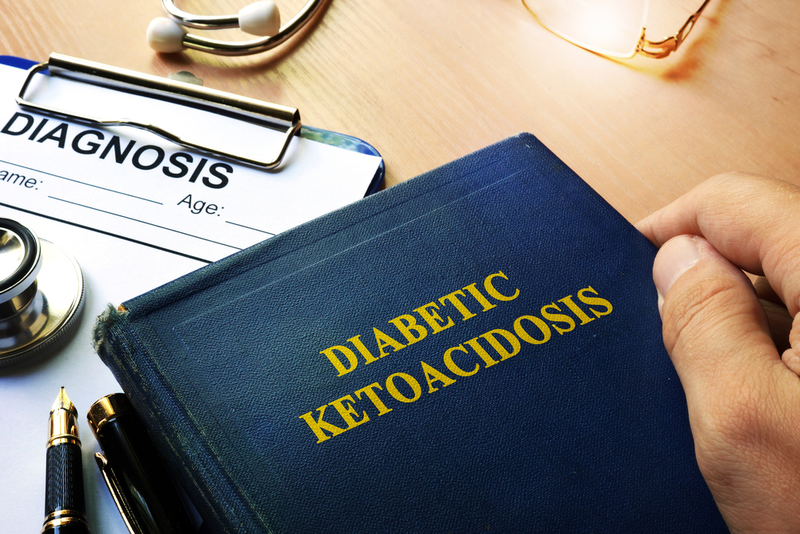Diabetic ketoacidosis: What to know
Healthline/Medical News Today May 13, 2019
Diabetic ketoacidosis can be a life-threatening complication of diabetes. If a person does not seek immediate treatment for DKA, it can lead to kidney failure, cardiac arrest, or even death. The more quickly a person seeks treatment for DKA, the better their chance of making a complete recovery.

Diabetic ketoacidosis (DKA) is a life-threatening complication of diabetes that occurs when the body breaks down fats too quickly. DKA occurs in people with diabetes when the body does not make or receive enough insulin. In this article, learn about the causes and symptoms of DKA as well as risk factors and treatment options.
What is DKA?
DKA is a potentially life-threatening complication of diabetes that occurs when the body begins to break down fats for energy instead of sugars. In people without diabetes, insulin helps sugar enter the cells, which use it for fuel. A person with diabetes does not make enough insulin to properly transport the sugar, which means that their body cannot use it for energy.
Without enough sugar, the liver turns some of the fat in the body into acids called ketones. Ketones build up in the bloodstream and spill over into the urine. When these excess ketones get into the blood, the blood becomes acidic, causing DKA. DKA is a medical emergency. Anyone living with diabetes needs to learn the signs and symptoms of DKA to know when to seek urgent medical treatment.
DKA in type 1 vs type 2 diabetes
DKA is much more likely to occur in people with type 1 diabetes, but anyone with type 1 or type 2 diabetes can develop it. Those who need to take insulin have a more severe form of diabetes and, therefore, will have a higher risk of DKA. People with type 2 diabetes who may be prone to ketosis include:
- Older people
- People who are overweight
- People from nonwhite ethnic groups
Symptoms
DKA symptoms often start suddenly and can include:
- Excessive thirst
- Nausea
- Vomiting
- Frequent urination
- Abdominal pain and discomfort
- Rapid breathing
- A flushed face
- Fatigue
- Weakness
- Confusion
- Fruity-smelling breath
- Dry mouth and skin
People with diabetes who monitor their blood sugar regularly may also find that their blood sugar readings have become very high. For others, the symptoms of DKA may be the first indication of diabetes, which may lead to a diagnosis.
Causes
Very high blood sugar levels and low levels of insulin cause DKA. Either illness or a problem with insulin therapy can put a person at risk of having high blood sugar or low insulin, even with regular diabetes treatment.
Illness and infection alter the production of some of the body's hormones, such as cortisol and epinephrine. These hormones change how insulin works in the body and can reduce its effectiveness, which some people may need to counter by taking extra insulin while they are unwell.
Problems with prescribed insulin therapy can also cause DKA. Some issues with insulin therapy that may trigger DKA include:
- Missing an insulin shot
- A clogged insulin pump
- Not using the correct insulin dosage
Other triggers for DKA can include:
- A heart attack
- A stroke
- Physical trauma, such as a car accident
- Emotional stress
- Drug or alcohol misuse
- Certain medications
People with type 1 diabetes or those who frequently miss insulin doses have the highest risk of developing DKA. Some diabetes medications may increase the risk of DKA even when the blood sugar is not high.
Treatment
When treating DKA, doctors aim to normalize blood sugar levels. They may prescribe the following treatments:
- Intravenous (IV) fluid replacements
- IV insulin drip until blood sugar levels drop to within an acceptable range
- IV electrolyte replacements
The treatment for DKA can sometimes cause complications. Possible complications include:
- Hypoglycemia, or low blood sugar, from insulin rapidly entering the body
- Hypokalemia, or low potassium levels, from fast fluid replacement
- Cerebral edema, or swelling in the brain, as a result of changing the blood sugar levels too quickly
Due to the risk of these complications, doctors will closely monitor people with DKA in the hospital.
Prevention
A person with diabetes can take many steps to prevent DKA. Preventing DKA usually centers on learning how to manage diabetes well. Preventive steps include:
- Routinely testing the blood sugar to make sure that it is not getting too high
- Taking oral and injected diabetes medication according to the prescription
- Asking a doctor about adjusting insulin dosage if necessary, particularly if blood sugar is high
- Checking ketone levels in the urine when ill or after an injury
Anyone who suspects that they may have DKA should be prepared to act quickly and seek emergency medical treatment.
-
Exclusive Write-ups & Webinars by KOLs
-
Daily Quiz by specialty
-
Paid Market Research Surveys
-
Case discussions, News & Journals' summaries